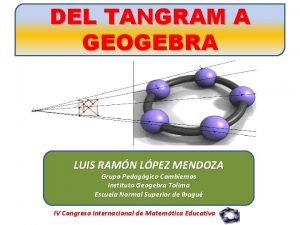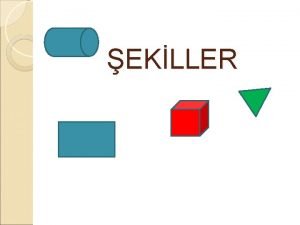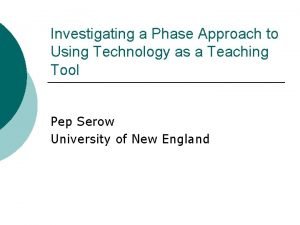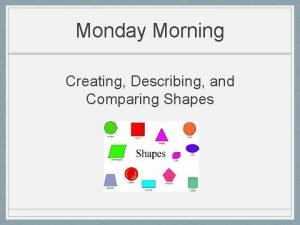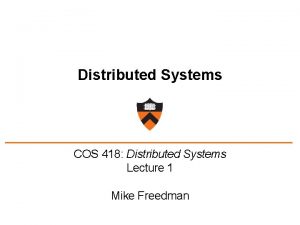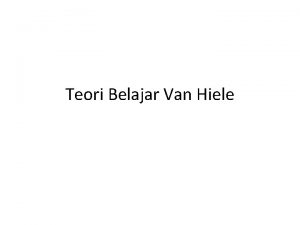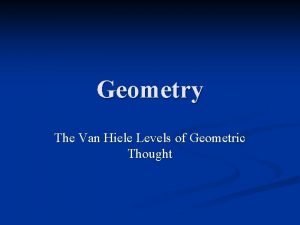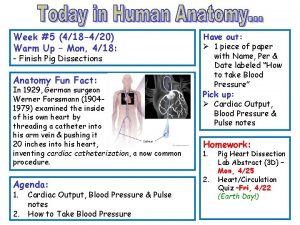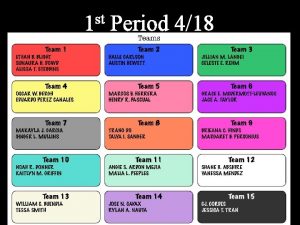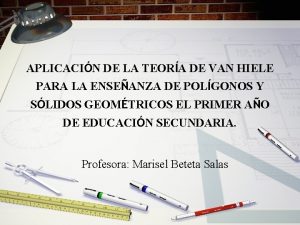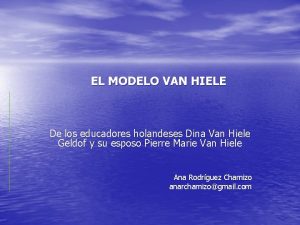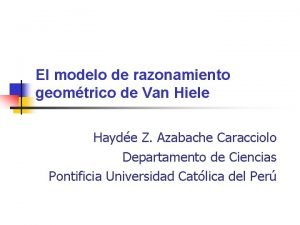The van Hiele levels MA 418 Spring 2010








- Slides: 8

The van Hiele levels MA 418 – Spring 2010 Mc. Allister

Who were the van Hiele’s? • Dr. Pierre van Hiele and Dr. Dina van Hiele-Geldof were a husband wife mathematics education research team in the Netherlands • They observed children and developed a theory of how individuals progress through 5 levels of geometric thinking

Level 0 - Recognition • Students at this level rely on their perception of the figure. • This level is totally concrete. • This level is holistic – all of the following might be perceived as triangles:

Level 1 – Analysis of single shapes • Rely on perception and is still concrete • Know the names and properties of specific geometric figures • Do not see relationships between various types of figures: – May not recognize that a square is a special type of rectangle.

Level 2 – Relationships among shapes • Beginning to develop abstract understanding of figures • Able to create meaningful definitions and form informal arguments and proofs • The role and significance of form deduction is not understood

Level 3 – Deductive reasoning • Can reason abstractly about figures – no longer depend upon concrete figures to reason and make deductions • Can construct a deductive proof using definitions and axioms – such as those found in a high school geometry class

Level 4 - Rigor • Have the ability to understand geometry as an axiomatic system • Can construct indirect proofs and proofs by contrapositive • Can understand non-Euclidean systems • Ability to reason is no longer dependent upon any type of diagram or concrete figure.

Effective instruction to achieve advancement • Lecture and memorization alone are not effective • Students need to be actively engaged with the figures and objects they are studying • Touching, drawing, measuring, constructing, folding, discussing, making deductions, etc. is essential
